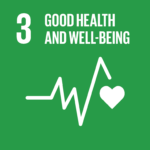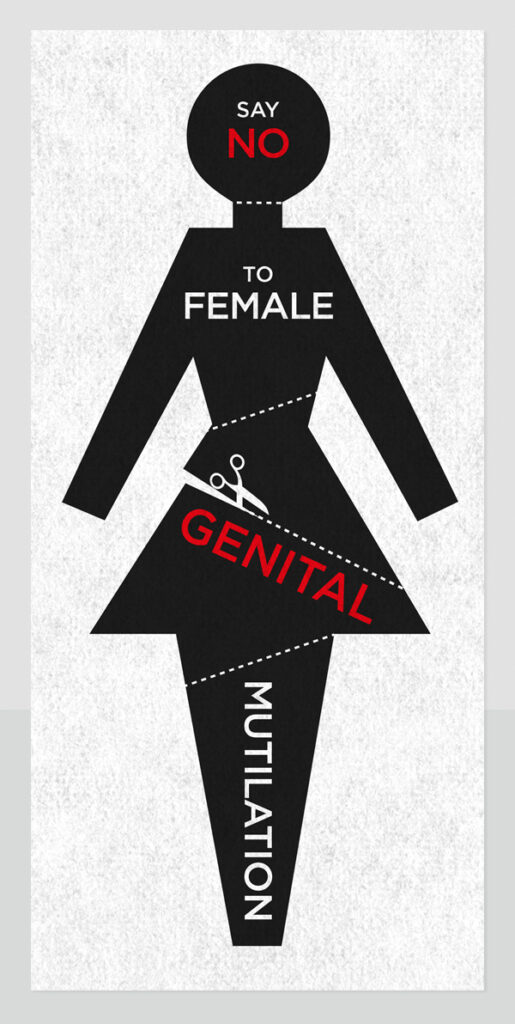It is estimated that 30 million girls under the age of 15 are at risk of Female Genital Mutilation over the next decade.
The practice of Female Genital Mutilations (FGMs), sometimes knowns as “female circumcision” continues in countries we would never realise it. As a result, young girls may have been told on what they believe are family holidays, only to be subjected to one of the most violent, traumatic, and life-changing medical operations in the contemporary world.
While February 6th is marked as the International Day of Zero Tolerance for Female Genital Mutilation (FGM), we need to talk about this topic more often. This topic is scarcely reported in the media, yet it needs discussing. It can be hard to start a discussion with females on FGM, but it is needed more so than ever; it can be seen as taboo and something that can’t be spoken about. It’s time for a change.
RELEVANT SUSTAINABLE GOALS


“Medical” Scourage No One Wants To Discuss
Female Genital Mutilation (FGM) are procedures that intentionally alter or cause injury to the female genital organs for non-medical reasons. This is considered a sign of purity and honor for girls to be cut. Because of cultural tradition and the social expectation that women are cut to be suitable for marriage, bringing about changes in attitudes is nearly impossible.
FGM involves cutting or removing parts of the external female genitalia, including some or all of the clitoral glans and clitoral hood, inner labia, and outer labia. The diagram below shows the different types of mutilation that may be performed. In the most extreme form, infibulation, the vulva is sewn shut (or sealed with acacia tree thorns) and only a small opening is left for urine and menstrual blood to exit. This opening may be as little as 2–3mm wide.
Female Genital Mutilation : What It Does To Woman
Apart from female genital mutilation being a gross human right violation not having no benefits whatsoever for girls and women, there are health and sexual related and psychological problems associated with FGM. Immediate health-related issues include severe pain, excessive bleeding (hemorrhage), genital tissue swelling, fever, infections such as tetanus, urinary problems. Shock, death.
The long-term effect includes:
- Menstrual problems (painful menstruation).
- Urinary tract infections.
- Scar tissue and keloids.
- Sexual problems such as pain during intercourse.
- Increased risk of childbirth complications and host of other complications.
Women who have been subjected to FGM have a host of medical problems in their daily, sexual and reproductive life, especially during menstruation and childbirth, and there is lower urinary tract involvement.
Psychological problems associated with female genital mutilations would include depression, low self-esteem, post-traumatic stress disorder, anxiety, to mention but a few. Perhaps the most haunting effect of FGM on a woman would be its effect on sexual satisfaction.
Sexual satisfaction for the woman who has been circumcised would be drastically reduced if not nonexistent (this is dependent on the type of FGM procedure carried out.

Know The Stats
Here’s what you need to know :
- According to World Health Organisation statistics, more than 200 million girls and women alive today have been cut in 30 countries in Africa, the Middle East and Asia where FGM is concentrated.
- Studies have shown that, in South East Asia, FGM is practised by more than 90% of the Muslim population in Indonesia and Malaysia
- FGM is practised in South Thailand, Singapore and Brunei, as well as in Sri Lanka among the Malay community. FGM is also believed to be prevalent in some areas of Afghanistan, Pakistan, The Philippines and The Maldives. Recent research by Sahiyo shows that a form of FGM, Khatna, is commonplace in the Bohra Community in India. In Australia and New Zealand, FGM is prevalent among some diaspora communities.
- FGM in Indonesia is a complex issue and is heavily ingrained in society. A survey in 2001 reported that 71% of Indonesian women had undergone FGM, and a further report in 2016 found that nearly half of all girls under the age of 11 had undergone FGM.
- In 1997, the WHO issued a joint statement against the practice of FGM together with UNICEF and UNFPA.
- Great efforts have been made to counteract FGM through research, work within communities and changes in public policy.
- The fact sheet by the World Health Organisation was updated in January 2018 with all related info that can be found on FGMC_2016_brochure_final_UNICEF_SPREAD
- In Kenya, 1 in 4 women undergone female genital mutilations. 9 million women and girls have undergone FGM in Kenya
- More than 3 million girls in Africa alone are estimated to be at risk of female genital mutilations each year.
- More than 200 million girls and women alive today have been cut in 30 countries in Africa, the Middle East and Asia where female genital mutilations are concentrated.
- In Egypt, 91% of women between the ages of 15 to 49 have been circumcised despite the banning of FGM by the government!
- Statistics also show that Nigeria has the highest absolute number of cases of FGM in the world accounting for about one-quarter of the estimated 200 million circumcised women worldwide!
The statistic speak for themselves. Female Genital Mutilations are a global concern !
According to UNICEF :
In every society in which it occurs, FGM is a manifestation of entrenched gender inequality
Ending Female Genital Mutilation is Possible
If you believe you are at risk of FGM/C or have undergone FGM/C, have questions about FGM/C, have information about someone who is performing FGM/C in the your country, or know of someone who may be at risk of having the procedure done here. please contact this number for additional information about available resources :
The following organisations are working to end FGM in Asia




